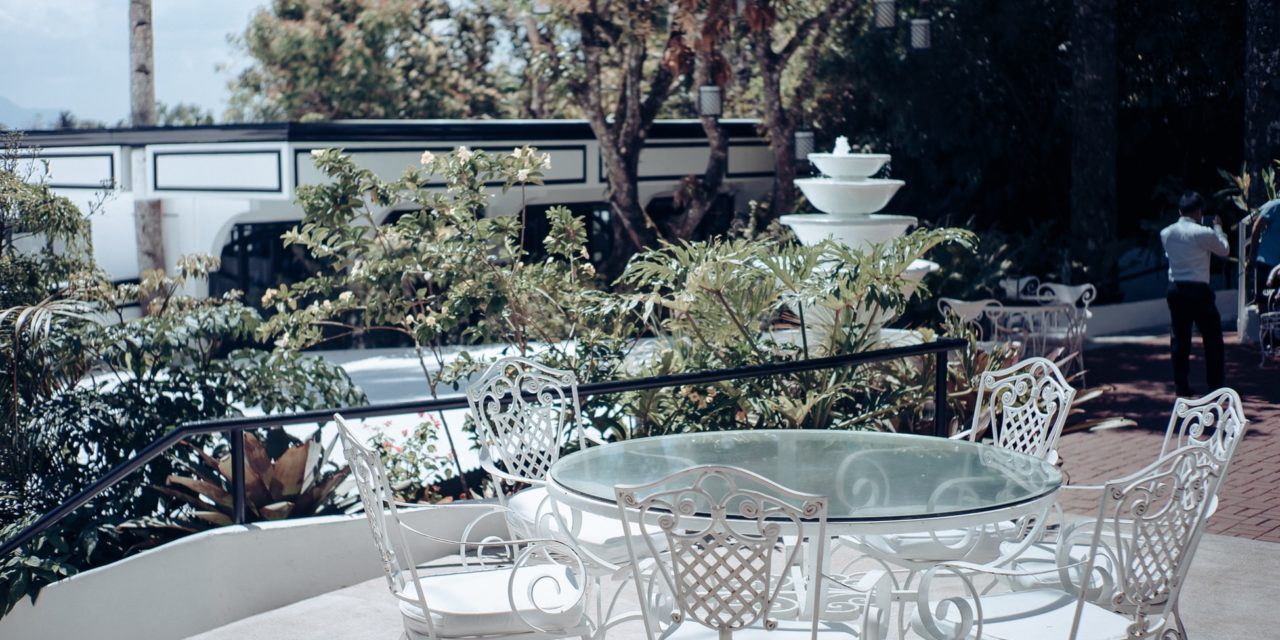[ad_1]
In the world of furniture manufacturing, there are companies that specialize in indoor furniture, outdoor furniture and between the two there is a limited amount of crossover. Outdoor furniture is built differently than the indoor variety, and while you can always use outdoor furniture inside, the opposite is not always the case. If you are debating moving some furniture for outside for a party or a much longer period of time, know what should and shouldn't be used, and what can be made over to better handle the elements.
Be a material girl:
You don't have to be Madonna to figure out that some materials are better suited for the outdoors than others, depending on type of furniture. Outdoor materials need to be sturdy enough to withstand variant temperatures, a certain amount of moisture from rain, dew, etc. and humidity.
Common sense dictates that there are certain materials that should never be taken outside, unless you're absolutely sure that the weather will be perfect. For instance, carpeting is a disaster when it gets wet. It takes forever to dry, and can mold, and it also gets really stiff when it's cold. That's why rugs not meant for the outside should stay inside. Likewise, materials like suede, fleece, and dry-only materials should also not be taken outside. Companies manufacture cushion and deep seating fabrics that mimic the feel of more luxurious materials, but are fully waterproof.
Then there are certain pieces that can go outdoors for limited periods of time before you have to worry. Wicker, for instance, though technically considered patio furniture, is not that strong and holds up much better in sunrooms and away from prolonged exposure to sun and rain. Then there are things like thin pottery, ceramic and plastic pieces that are waterproof but not suitable as furniture, outdoor or in. They aren't strong enough to withstand extreme temperature changes or strong, inclement weather. Untreated metal is also okay to get wet for short periods, but for much longer than that and you risk it rusting.
Then there are those materials intended for use as outdoor furniture. Outdoor materials are especially hearty but still look visually pleasing. Examples of tables, chairs, planters, and more can be seen made out of the following: treated wood and hardwoods, galvanized metal, powder-coated metal (aluminum, wrought iron, zinc hardware), stone and cement (as tables, benches and umbrella stands), marbles, clay and reinforced ceramics (as planter pots), poly resin plastics and waterproof nylon (used in canopies and as cushion covers).
This list only begins to scratch the surface of the multitude of materials that make up our lives. In all, use your best judgment about whether something can go outdoors. Take into account weather patterns. If it's really nice out, you can be more lenient about what you take outside as furniture. Outdoor conditions can change rapidly, though, so keep an eye out.
Treating Wood
The best thing you can repurpose for use as indoor furniture/outdoor furniture is wood. It's no more difficult than adding some varnish and it might save you from unnecessarily buying all new furniture. To begin with, take a look at the wood you're working with. Stay away from old wood that's in bad condition, as it will deteriorate at an even more rapid pace once taken outside. Next, check what species of wood you have. Some of the naturally stronger woods, like teak, pine, cedar and cypress, are great for the outside. These woods are already strong and durable on their own and require little extra protection. More delicate woods will require extra sealant and even then they probably won't last as long outside as hardwoods.
To begin the weatherproofing process, you will need to cover wood with a fade-proof, UV-resistant finish. Sand away any lacquer that may already exist on your furniture. Whatever finish is on there is most likely intended for inside, and while it will give furniture a high gloss shine, it's not the right kind of varnish that will protect it from moisture and the outdoor elements. After the surface is smooth, even and clean you can apply a sealant, usually an oil-based varnish, unless you're working with a wood that produces its own oils, like teak and cedar furniture. Outdoor atmospheric elements will dry out wood more quickly than furniture that's kept indoors, so it's important to protect the surface and heartwood against cracking, rotting and warping. Once that's complete, you're good to go. From then on, simply oil and clean your wood furniture once to twice a year to keep it healthy.
[ad_2]
Source by Tonya Kerniva


